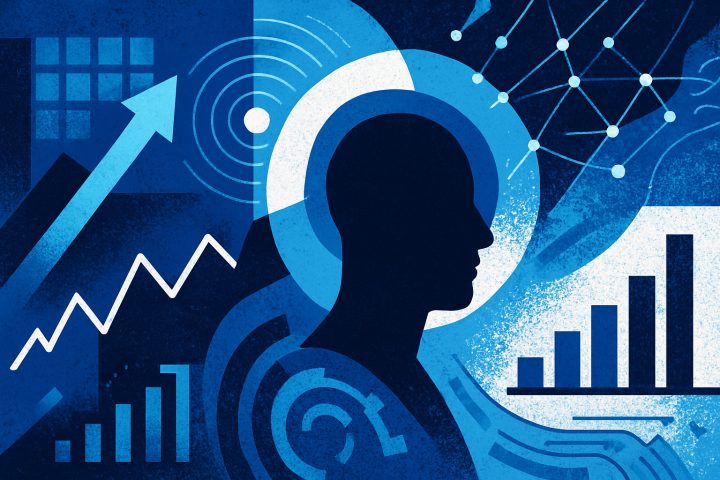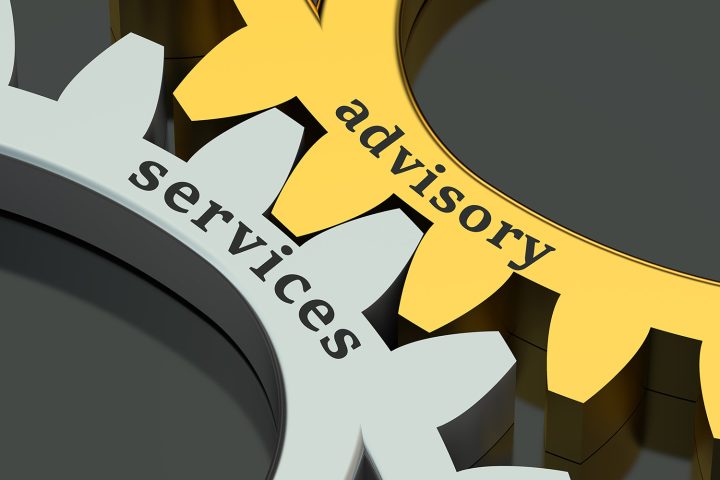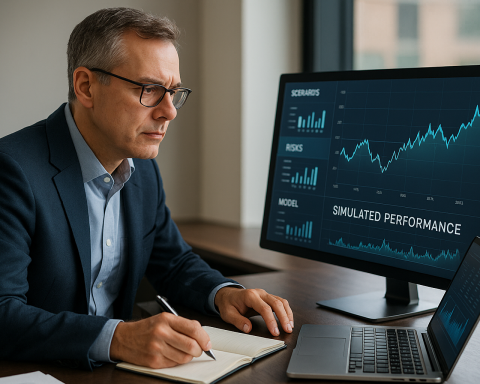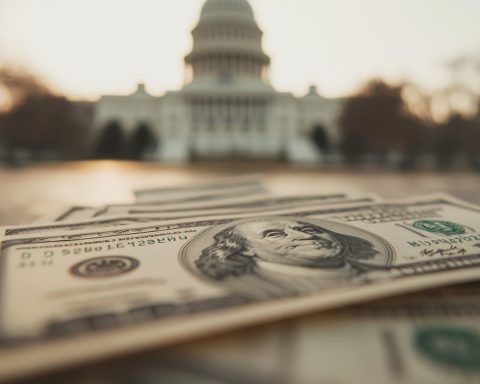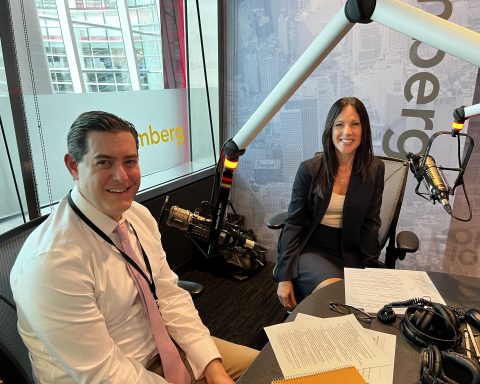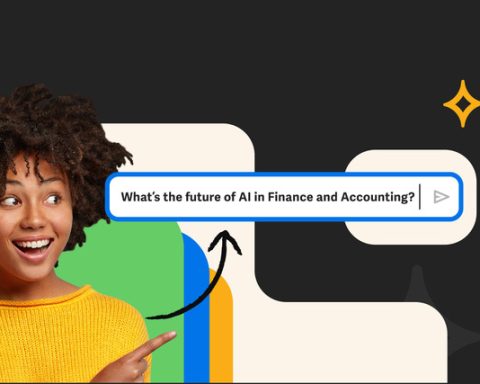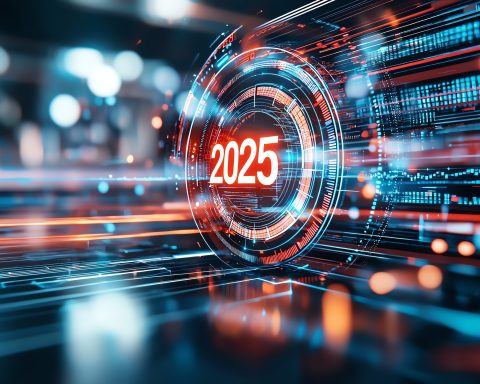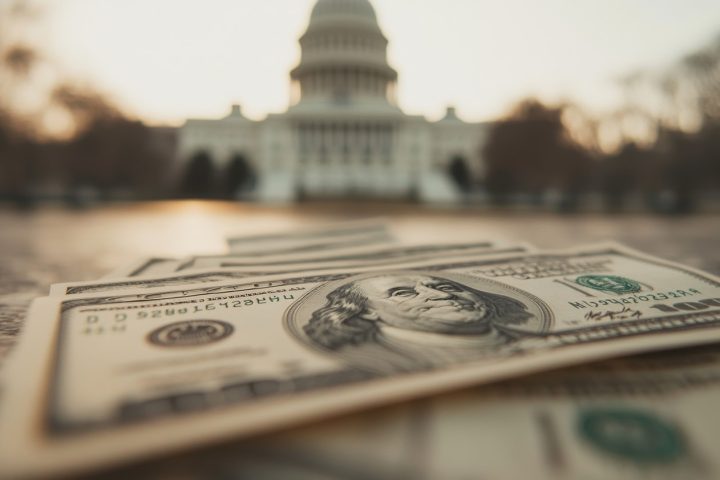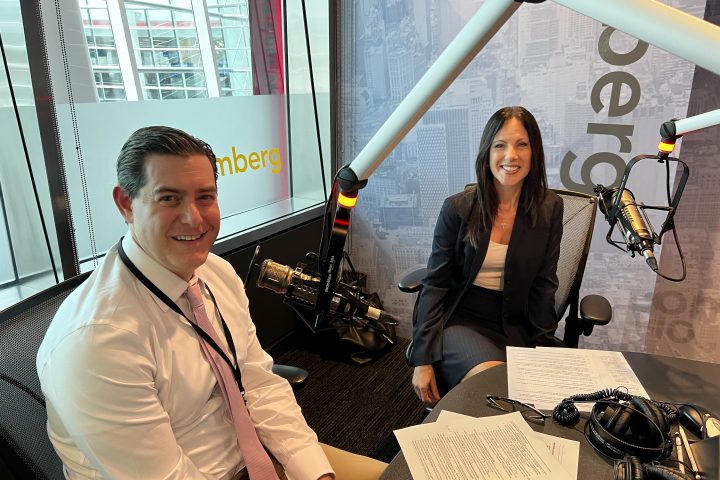Introduction
If Part I – How AI is rewriting the CFO Playbook opened your eyes to what’s working now, then Part II is about widening your field of vision. Because what we’re seeing in today’s AI finance use cases is just the beginning. The real change is ahead, and it’s coming fast.
Most finance leaders still think in terms of automation, how AI can help them go faster, cleaner, or cheaper. And that’s fine… for now. However, the next frontier is about evolution: AI is rapidly moving from a reporting tool to a strategic partner.
By 2028, we’ll orchestrate strategy with autonomous systems that simulate decisions in real time. Surpassing historical report, we’ll generate investor-ready narratives tailored to every stakeholder persona, instantly and in every format. We won’t just meet ESG regulations but rather model carbon like a financial asset and treat it as a lever for competitive advantage.
Finance is transforming from command and control to collaborate and co-pilot. The winners won’t be those who invest in the most tech, but those who know how to unlock the most value.
In this second part of our series, I’ll show you where we’re headed. You’ll see what forward-looking finance leaders are already building, and how you can prepare today to lead tomorrow. Part I was about clarity. Part II is about vision and the future you’ll soon be managing.
1. Autonomous Financial Strategy Modeling
Strategic financial modeling has always been a high-value activity. It requires judgment, deep market knowledge, and sophisticated scenario planning. However, it’s also been one of the most time-intensive, assumption-driven, and slow-to-evolve parts of finance. Enter Autonomous Financial Strategy Modeling.
Forget about AI automating spreadsheets. We’re talking about multi-agent AI systems that continuously simulate capital strategies, pricing models, market entries, M&A deals, and even competitor responses without waiting on quarterly steering committees or Excel macros.
Consider a global consumer goods firmsfacing a dilemma: double down on a premium pricing strategy in Latin America or shift to a volume-based play to gain shelf space. Normally, they’d commission a consulting study, build a multi-tabbed model, wait 5–6 weeks, and maybe come up with three scenarios. Instead, we implemented a reinforcement learning-based AI model tied to their real-time sales data, economic indicators, and competitor pricing trackers.
The AI generated 87 viable scenarios in under 48 hours.
It didn’t just spit out numbers. It identified optimal strategies based on their goals (e.g., gross margin preservation vs. long-term market share), predicted downstream impacts like cash flow volatility, and even flagged potential supply chain constraints in their packaging material.
The best part? The CFO told me, “This wasn’t just faster… it gave us strategy options we never would’ve thought of ourselves!”
That’s the power of autonomous financial strategy modeling. Going beyond calculations, it learns, tests, and adapts. It runs thousands of simulations across dynamic variables, like labor rates, FX shifts, supplier delays, regulatory changes, and continuously refines its models based on outcomes and feedback loops.
Even though this is still in the stage of first adopters, it’s already being used by industry leaders:
- Microsoft’s Project Maia leverages autonomous agents to optimize long-term Azure infrastructure investments, dynamically reallocating billions in capital based on demand patterns and energy pricing.
- Goldman Sachs is experimenting with agent-based financial modeling to simulate how specific interest rate moves might affect leveraged loan portfolios and macroeconomic conditions.
- Shell is applying similar techniques to forecast energy pricing strategies across 5–10 year horizons by modeling carbon taxes, geopolitical risk, and global demand curves.
What this means for you:
- You’ll go from reactive to proactive. Instead of responding to disruptions after the fact, you’ll simulate them in advance and prepare contingencies before they hit.
- You’ll unlock smarter capital deployment. AI will help you test investment hypotheses, model cash flow sensitivity, and reallocate resources based on evolving market dynamics without waiting for month-end close.
- You’ll elevate finance as a strategic function. Autonomous modeling empowers you to walk into the boardroom with not just “the numbers,” but “the playbook” and be ready to answer “what ifs” in real time, backed by simulations, not speculation.
- You’ll de-risk big decisions. Whether you’re weighing an acquisition, a pricing overhaul, or a multi-year product roadmap, AI can help quantify upside, flag hidden risks, and simulate competitor reactions before committing capital.
- You’ll democratize strategic thinking. Mid-market finance teams can now access the kind of strategic modeling once reserved for McKinsey clients and hedge funds. That’s real value. And it’s here today.
The bottom line? Autonomous strategy modeling changes finance from being the scorekeeper to the chief strategist. It lets you operate at machine speed while retaining human judgment. And when you fuse that with your deep industry experience and leadership insight, you become the architect of the future.
2. Generative AI for Board Reporting & Investor Relations
Board reporting has always been high stakes and high stress. The pressure to deliver crisp, accurate, and tailored narratives to boards, investors, and analysts continues to climb, especially as expectations around real-time insight, transparency, and ESG disclosure skyrocket.
However, here’s the challenge: most financial executives still rely on a painstaking mix of spreadsheets, slide decks, and last-minute rewrites to meet that bar. You know the drill… version control issues, endless alignment meetings, formatting panic the night before, and hours spent crafting language that tells the story just right. This is exactly where GenAI is stepping as a communications strategist.
Leading enterprises already use GenAI to produce executive-ready narratives, tailor content for specific stakeholder personas, and even generate custom video briefings with digital avatars that explain results using synthesized voice and expressions. We’re talking about investor materials that are not just automated, but adaptive and audience aware.
Recently, I helped a company pilot a GenAI system powered by a fine-tuned large language model. The AI automatically generated QBR slide commentary, drafted key messages for the earnings call script, and suggested regulatory-compliant language for 10-Q narrative sections. Within weeks, they cut investor reporting prep time by 65%. More importantly, they were able to tailor communications by stakeholder type:
- Institutional investors received a performance summary with macroeconomic context and capital efficiency KPIs.
- ESG focused investors received impact narratives aligned to SASB/TCFD frameworks.
- The Board received three scenario briefings, with financials, risks, and AI generated talking points, linked to potential M&A targets.
This is the new standard emerging. Already, Synthesia, HeyGen, and Hour One allow companies to produce professional-grade video briefings featuring hyper-realistic avatars, speaking your board script and localized by region or role. Combine this with GenAI models like FinGPT, Claude, or even fine-tuned enterprise versions of GPT-4, and you have a full-stack reporting machine that can produce custom narratives on demand, with embedded data validation and compliance logic.
Even BlackRock is exploring AI investor outreach tailored to stakeholder preferences and sentiment, while Nasdaq is testing AI to assist in preparing Form 10-K MD&A sections with contextual benchmarks and market trends.
What this means for you:
- You’ll eliminate the last-minute scramble. AI can draft board summaries, IR scripts, and talking points in minutes, based on live data from your ERP, CRM, and market feeds, freeing your team to focus on insight, not formatting.
- You’ll increase precision and consistency. AI ensures alignment in tone, terminology, and story across reports, presentations, and conversations while also reducing the risk of messaging misalignment or regulatory missteps.
- You’ll tailor your message to each audience. No more “one-size-fits-all” investor decks. With AI, you can adapt your messaging for activist investors, ESG funds, debt holders, or M&A partners, each with the level of detail and tone they value.
- You’ll boost engagement and credibility. AI content can integrate external benchmarks, analyst sentiment, and forward-looking guidance more comprehensively and give you richer stories that resonate.
- You’ll future proof your IR strategy. As markets move toward real-time investor relations, AI allows you to respond quickly to major changes, questions, or reputational challenges.
Generative AI gives you the power to control the narrative… faster, smarter, and more persuasively. How you tell the story is often as important as what the numbers say. With GenAI, you don’t have to choose between depth and speed. You get both. You don’t need to worry about whether your message landed. You’ll know it did because you’ll have the ability to shape it, refine it, and deliver it to every stakeholder, exactly how they need to hear it.
So, ask yourself: If your next investor meeting is tomorrow and your CEO wants three versions of the story, can your team deliver? Or will you wish you had already put GenAI to work?
3. AI ESG & Carbon Accounting Compliance
ESG is coming for your reporting stack whether you’re ready or not. With Europe’s Corporate Sustainability Reporting Directive (CSRD) rolling out, California’s new Climate Accountability Package gaining traction, and the SEC finalizing climate-related disclosures, financial executives are being pulled into a whole new level of regulatory complexity.
Here’s the challenge: ESG data is messy, decentralized, and largely unstructured. Unlike financial metrics, which live neatly in ERPs and GLs, ESG data comes from everywhere, like energy meters, vendor spreadsheets, facility reports, HR systems, third-party certifiers, and increasingly, real-time IoT sensors. And there’s a bigger problem: you’re now expected to treat ESG disclosures like audited financials.
As a result, a lot of investment is focused on AI carbon and ESG accounting as the lifeline to overcome these problems.
For instance, a large industrial manufacturer recently found itself in the crosshairs of a European customer demanding full Scope 3 emissions data. The finance team was stuck. Procurement didn’t have the right supplier disclosures. Operations was inconsistent with site-level energy tracking. Marketing wanted to publish a sustainability report but couldn’t back up half the claims.
Using new tools like Persefoni, we developed an AI system to aggregate and normalize their emissions data across Scopes 1, 2, and 3, calculated carbon intensity per product line, flagged data gaps, and generated CSRD-aligned reports with full audit trails. What took them three months to compile manually now updates automatically every week. The CFO told me, “It’s like we gave our sustainability data a brain and a backbone.”
And they’re not alone.
- Watershed is used by companies like Stripe, Airbnb, and Spotify to not only report emissions, but actively model decarbonization strategies using AI (even recommending which suppliers to switch, which facilities to retrofit, and what offsets are most credible.)
- Greenomy is helping financial institutions track and report against the EU Taxonomy with automated classification and risk scoring.
- Planetly (acquired by OneTrust) is leveraging machine learning to fill in missing ESG data based on industry and location benchmarks.
These tools don’t just help you comply… they help you compete because here’s what’s changing: investors, customers, and regulators expect ESG to be real-time, actionable, and reliable. AI makes that possible.
What this means for you:
- You’ll move from manual to machine-speed reporting. AI can collect, normalize, and validate ESG data across business units and vendors, automatically generating compliant, audit-ready reports for CSRD, SEC, SASB, TCFD, and more.
- You’ll finally see your emissions in financial terms. AI helps quantify the cost of carbon in P&L language, so you can model, for example, how rising carbon prices might impact EBITDA, or how switching to renewable contracts could improve gross margins.
- You’ll gain leverage with stakeholders. Want better vendor pricing or board approval for green CapEx? AI ESG data gives you the proof, projections, and scenarios to justify decisions with real numbers.
- You’ll derisk your reputation. With greenwashing claims rising and compliance audits tightening, AI gives you traceability, audit trails, and explainability, so you can defend every claim you make with confidence.
- You’ll turn compliance into competitive advantage. The companies winning ESG aren’t just checking boxes. They’re using AI to guide sourcing decisions, improve operational efficiency, and shape investor narratives. You can too.
Are you prepared to treat carbon like currency? Because that’s what the market is moving toward. Carbon will be priced, taxed, disclosed, and traded just like financial assets. If your team is still using spreadsheets, guess who’s at risk? However, if you get ahead by automating ESG data capture, aligning to global frameworks, and modeling sustainability decisions with AI, you don’t just survive the coming wave. You ride it.
4. Real-Time Risk Orchestration & Scenario Stress Testing
If the last five years have taught us anything, it’s that risk doesn’t wait for your quarterly review. Interest rates spike overnight. Cyber threats emerge from nowhere. Supply chains collapse in hours. And black swan events? They’re starting to show up every Tuesday.
Traditional risk management frameworks are simply not fast or flexible enough to keep pace. Static risk registers, fixed scoring models, and annual “what-if” reviews give you a false sense of control in a world that now demands real-time adaptability and high-frequency decision-making. This is where AI is fundamentally transforming the game.
Today, leading organizations are shifting from risk monitoring to risk orchestration by using AI to dynamically assess vulnerabilities, simulate stress scenarios, and recommend action plans in near real time. This no longer a luxury. It’s becoming a board-level expectation.
For instance, a global manufacturing conglomerate was blindsided in early 2024 by a politically driven export restriction that halted shipments of critical material. Their existing risk framework had flagged geopolitical risk but only at the country level. It wasn’t granular enough to detect a real-time escalation in trade policy rhetoric.
To overcome this issue, we created an AI risk graph engine that ingested thousands of external signals: news sentiment, government policy trackers, shipping delays, currency fluctuations, and supplier communications. The model mapped cascading risks across business units, flagged exposure hotspots, and simulated alternate sourcing strategies in under 6 hours.
The result? They detected a similar issue likely to occur in 2025, so the enterprise activated contingency plans before the restriction took full effect, saving $21 million lost production costs. Their CIO called it “the best use of AI because it helped us respond before the future hit us.”
This is real-time risk orchestration in action. Because it’s not something people are used to doing (at large scales), understanding let alone adoption has been slow. However, the industry is reaching an inflection point, and it’s starting to scale across industries:
- Standard Chartered is using graph AI and geopolitical event prediction models to monitor counterparty and sovereign exposure minute by minute.
- HSBC is piloting agent-based stress testing to simulate how a liquidity crunch in Southeast Asia could cascade through global trade finance lines.
- Hedge funds like Bridgewater are layering sentiment AI on top of economic data to model market shocks from elections, central bank decisions, and even natural disasters.
Even mid-market firms are now using open-source frameworks like Prophet, Dask, and Neo4j, combined with commercial platforms like Cytora, SAS Risk Modeling, and Microsoft Risk Insights, to ingest structured and unstructured data, simulate stress scenarios, and model financial impacts.
What this means for you:
- You’ll see beyond obvious risk. AI connects the dots across thousands of weak signals to surface emerging threats, whether it’s a supply chain vulnerability, a reputational risk brewing on social media, or an FX exposure that could detonate next quarter’s earnings.
- You’ll simulate instead of speculating. Want to know how a 2% Fed rate hike, a supplier bankruptcy, or a Taiwan crisis might impact your balance sheet? AI can stress test these in minutes, complete with impact ranges and mitigation strategies.
- You’ll reduce time-to-decision in crises. AI can alert you to brewing risks, simulate countermeasures, and support decision trees with updated inputs, so you’re not caught flat-footed when the unexpected strikes.
- You’ll move from static heatmaps to dynamic dashboards. Instead of red-yellow-green charts that age like milk, you’ll operate with live dashboards showing current exposures, risk paths, and recommended plays that are curated for CFOs, risk officers, and ops leaders.
- You’ll integrate finance, operations, and risk. AI makes it possible to model not just whether a risk exists, but how it will affect your P&L, working capital, and cash flow. That’s true risk-to-impact visibility.
Here’s the new mindset: risk is a living system, and it needs to be managed like one. You don’t have to become a quant to lead this transformation. However, you do need to become a risk orchestrator, building an AI capability that connects data, insights, and action in real time.
5. Cognitive Workforce Optimization & AI Talent ROI Modeling
Talent is still your #1-line item and your biggest strategic asset. However, if we’re being honest, most organizations still manage talent using intuition, lagging indicators, and performance reviews that haven’t evolved in 20 years. That might’ve worked when roles were stable and success metrics were clear, but in the age of AI augmentation, hybrid roles, and rapidly shifting business models, that approach is a liability.
Finance leaders now face a new challenge: How do you measure and manage the value of both humans and machines working side by side?
That’s where cognitive workforce optimization and AI ROI modeling step in. We’re entering a new era of workforce intelligence where AI doesn’t just analyze employee performance. It also maps skills gaps, predicts flight risk, models team effectiveness, and recommends the optimal blend of human capabilities + machine augmentation to deliver the best outcomes.
For example, a logistics company was preparing to implement AI copilots to support their AR and AP teams. The CFO wanted to justify the spend but wanting to use the argument “automation saves time.” They needed to understand which roles benefit the most from AI augmentation, what the productivity uplift would be, and how that impacted financial performance over 12–18 months.
Consequently, we built a workforce digital twin using data from their HRIS, time tracking, finance systems, and process logs. The AI identified:
- Which workflows were ripe for automation.
- Which employees would see a 30–50% productivity lift by using AI tools.
- Where reskilling would be more cost-effective than hiring.
- Which teams had underutilized skill sets that could be reallocated to high-impact projects.
We modeled person-level AI ROI that quantified cost savings as well as value creation per role, per use case. This gave the CFO confidence to greenlight a targeted rollout that maximized return and minimized disruption.
Now, they revisit the model quarterly and adapt roles, responsibilities, and augmentation layers like a portfolio manager optimizes a stock portfolio.
This has triggered a new wave of emerging AI tools:
- Gloat is powering internal talent marketplaces that dynamically match people to projects based on skills, interest, and capacity with AI that recommending stretch assignments or training as part of the talent development strategy.
- Eightfold.ai helps organizations model future workforce needs and identify internal talent ready to fill upcoming gaps.
- SkyHive is being used by defense contractors and healthcare firms to run skills-based planning at scale by predicting the impact of automation and retirement waves before they hit.
- Accenture has built internal tools to calculate the ROI of AI augmentation per employee category, influencing both hiring and upskilling strategies globally.
What’s emerging is a new paradigm: finance leaders are no longer just stewards of capital… they’re stewards of human capital intelligence. By 2028, the tools will exist in mass use to treat workforce strategy like financial strategy: dynamic, data-driven, and precision-calibrated for ROI.
What this means for you:
- You’ll know where AI delivers real value and where it doesn’t. Not every role benefits equally from AI. Cognitive workforce modeling helps you identify which functions to augment, automate, or reskill based on measurable impact, not hype.
- You’ll make smarter hiring and training decisions. AI can help forecast future skills demand, highlight internal talent pools, and recommend training investments with the highest ROI, turning your L&D budget into a growth engine.
- You’ll balance cost optimization with employee engagement. AI can pinpoint when workload imbalance is leading to burnout or attrition risk and recommend workflow changes or bot support to preserve talent without sacrificing efficiency.
- You’ll finally see HR as a strategic partner, not a cost center. When HR works with Finance to model AI ROI, talent allocation becomes a business accelerator. You can run scenarios like: “What if we deploy generative AI to our customer support team?” and get hard numbers not guesswork.
- You’ll be ready for the AI enterprise. As AI becomes embedded into every function (e.g. finance, marketing, sales, legal) you’ll need a live view of how talent and technology work together, where productivity gains are emerging, and where friction is slowing you down.
The workforce is no longer just human. Financial executives who embrace this shift early will outperform peers. Why? Because they’ll understand not just the cost of talent but the value of augmentation. They’ll build organizations that are smarter, faster, and more resilient where people and AI collaborate by design, not by accident.
Conclusion
Looking ahead to the AI-enabled finance organization of 2028, we can expect a radical shift in how financial strategy is crafted, communicated, and optimized. Autonomous financial strategy modeling will empower organizations to proactively adapt to changing markets. Generative AI will revolutionize how boards and investors receive real-time, insightful reporting.
In parallel, AI’s role in driving ESG and carbon accounting compliance will ensure companies meet increasingly stringent regulations, all while real-time risk orchestration and scenario stress testing will become critical tools for navigating uncertainty. Lastly, cognitive workforce optimization and AI talent ROI modeling will help finance teams harness the full potential of human and machine collaboration, ensuring that talent strategies align with organizational goals in a dynamic environment.
Together, these advancements will not only redefine the role of finance but also elevate it to a strategic powerhouse, driving efficiency, sustainability, and long-term value creation.




